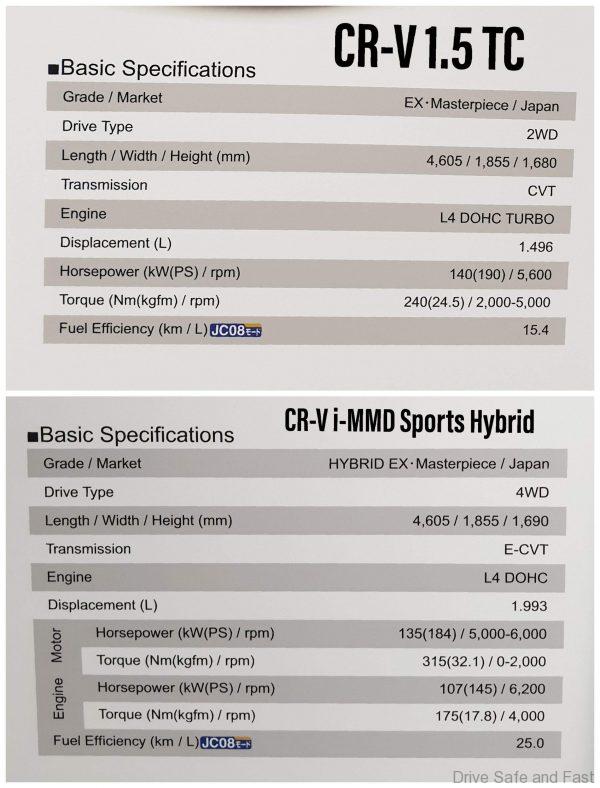Just like the Intelligent Dual Clutch Drive (i-DCD) system we find in the Honda Jazz, City and HR-V Hybrid, Honda’s Intelligent Multi Mode Drive (i-MMD) system works like no other hybrid system in production.

The i-DCD we’re familiar with operates like a traditional hybrid car, using the electric motor to get the vehicle moving, before the petrol engine starts up and takes over about 80% of the job. For the rest of the drive, the electric motor merely assists the petrol engine, boosting acceleration and removing some of the effort to move the car.
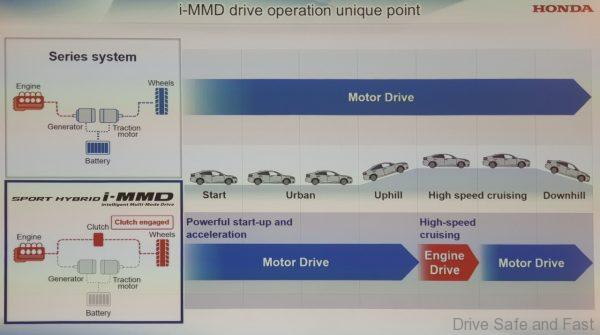
In the i-MMD system, very little is familiar. You still have a petrol engine, a Power Control Unit, a battery pack (Intelligent Power Unit, IPU) and an electric motor (E-CVT/Drive Motor), but there’s also a second ‘Generator’ motor, a lock-up clutch and NO gearbox. That’s right, this is a car without a traditional gearbox and it’s fantastic how that works.
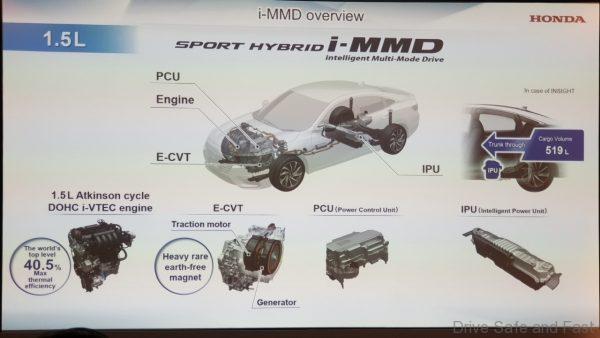
So what if there’s no gearbox?
A gearbox is an essential part of the equation in all mass-market cars. When the car comes to a stop, the gearbox will have a mechanism to prevent the engine from stalling out (either by a clutch or a torque converter). When you go into reverse, the gearbox will have a mechanism that reverses the rotation of the driven wheels. When you park it, there’s a mechanism that stops the driven wheels from moving at all. In neutral, the gearbox releases itself from the driven wheels. When more torque is necessary to get the car moving or up a hill, the gearbox has a mechanism (usually a lower gear ratio) to multiply the torque output. And when fuel efficiency is required, a higher ‘overdrive’ gear allows the transmission to rotate faster than the engine itself.
How i-MMD deals with the functions of a gearbox
To put it simply, the main electric motor that drives the wheels serves all the functions of a traditional gearbox except for preventing the petrol engine from stalling out and the overdrive function.
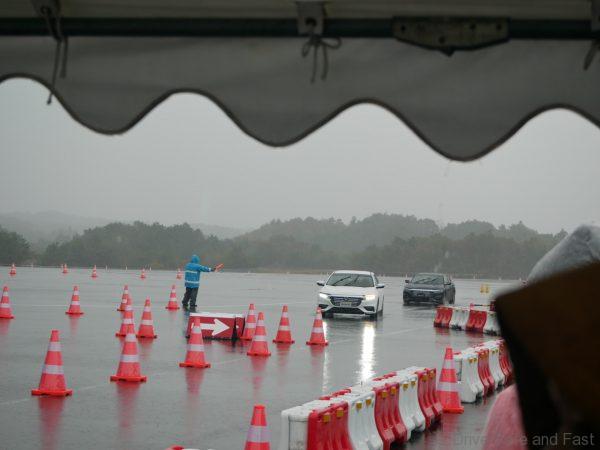
Function: P, R, D, N, L
If you put the car in Park, Reverse, Drive or Neutral, it’s the electric motor that locks itself, reverses its rotation, moves the wheels* or frees the wheels.
Going into lower gear by using the paddle shifters increases just makes the motors feel more resistant. It really feels more like a CVT than an automatic gearbox with distinct gears. In fact, when you hit down on the paddle shifters, you don’t get a gear number, but an arrow pointing down. Each time you shift down, another little arrow is added indicating how low down the range you’re going.
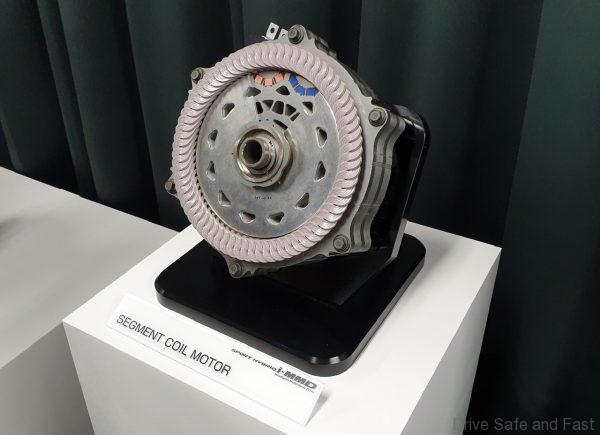
Function: Keep Petrol Engine from Stalling
To keep the petrol engine from stalling out, it’s COMPLETELY mechanically isolated from the electric motor. There is no mechanical linkage between the two.
Function: Overdrive
The opposite of shifting down in a regular gearbox would be to get the transmission in overdrive, where the engine is revving at an equal or slower speed than the transmission and driveshaft.
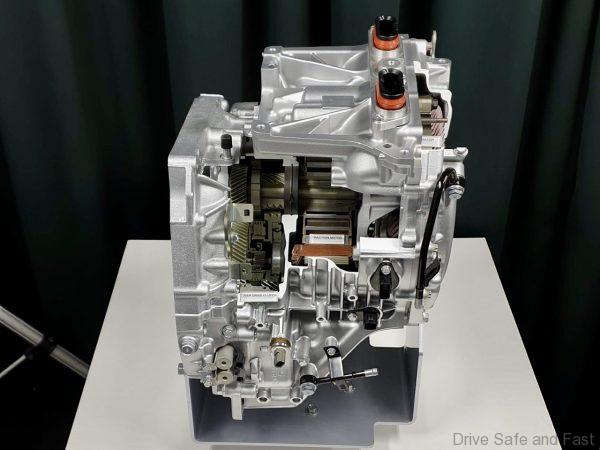
And while electric motors may be efficient at getting cars up to speed, but they’re just not great for keeping them cruising at high speeds. So when you’re at highway cruising speeds, the electric motor disengages from the wheels and a seperate lock up clutch mechanically links the petrol engine with the driven wheels. It’s like a single drive gear that’s configured to a 1:1 ratio. Not quite an effective overdrive, but Honda has a solution to that.
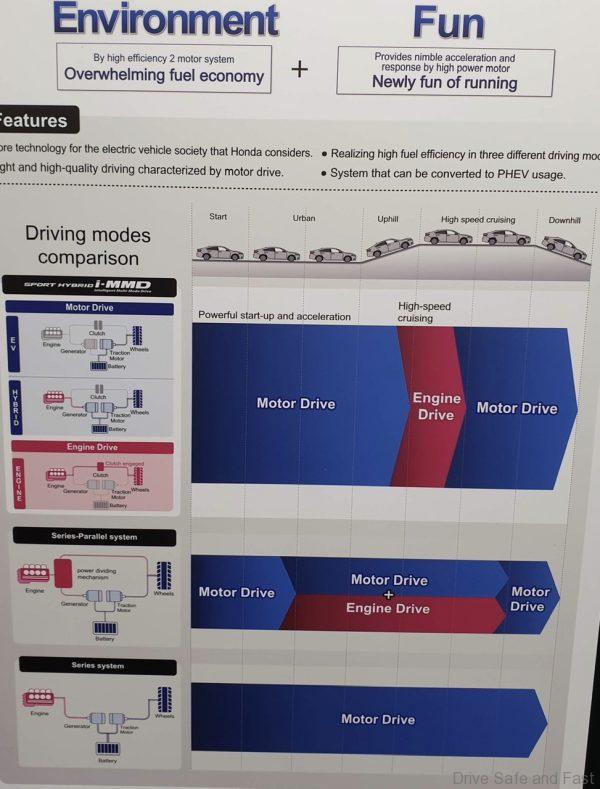
Since i-MMD is being applied to cars as small as the 2020 Honda Fit/Jazz to larger models like the Honda CR-V, the main thing that matters is the petrol motor. In the smaller, lighter vehicles a 1.5-litre Earth Dreams motor is installed while the heavier cars get a 2-litre equivalent.
* Other Drive Modes
So the i-MMD has essentially three Drive modes. We discussed how Overdrive works above, but in most cases the car is either in EV or HYBRID mode.

EV Mode
EV mode is straightforward. When the battery is adequately charged, the petrol engine is turned off and the car is moved on nothing but electricity using the main drive motor.
Hybrid Mode
Hybrid mode on i-MMD works unlike any conventional hybrid system we’ve experienced. When the battery is running out of juice OR when the driver accelerates hard, the petrol engine powers on. Because the car is not in overdrive mode, the lock up clutch we mentioned earlier is left open. The petrol engine is now spinning the GENERATOR MOTOR, a kind of dynamo.
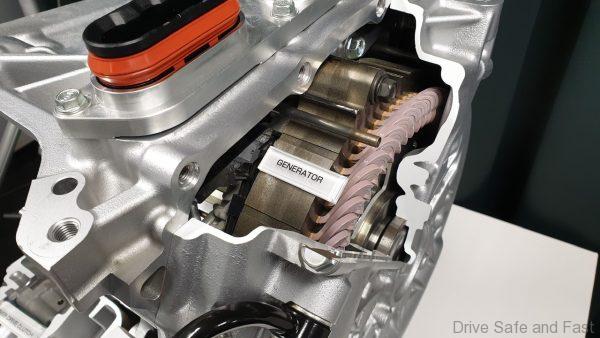
That generator motor directly sends boosts the output of the main drive motor. So in Hybrid mode, there is NO MECHANICAL CONNECTION between the petrol engine and the driven wheels. The mechanical energy is converted to electrical energy (Generator motor), which is converted to chemical energy (battery), which is converted back to electrical energy (Drive Motor), and then back to mechanical energy (rotation of wheels)
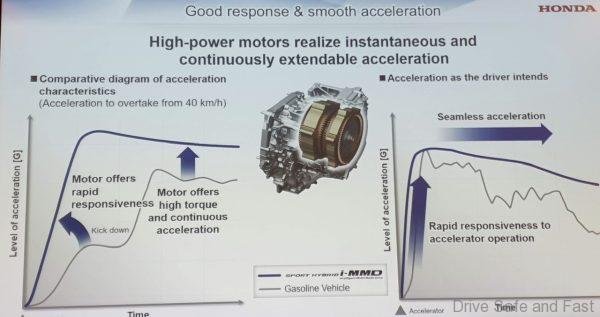
While that sounds awfully complex, a lot of these energy conversions happen in most hybrids anyway. The way Honda have arranged their system makes i-MMD is the most efficient hybrid in its class in terms of traditional fuel consumption and usable energy.
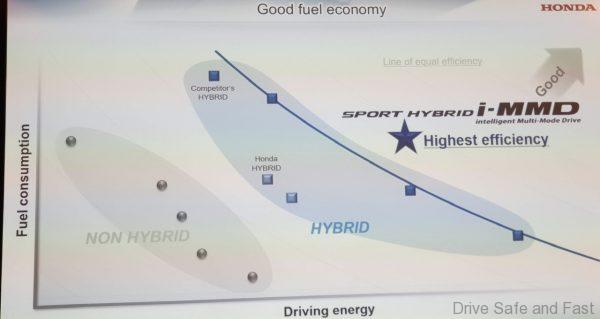
Honda has broken the mould with this system and you can see just how much more efficient it is in the new CR-V (which already has an efficient 1.5-litre Turbo.
